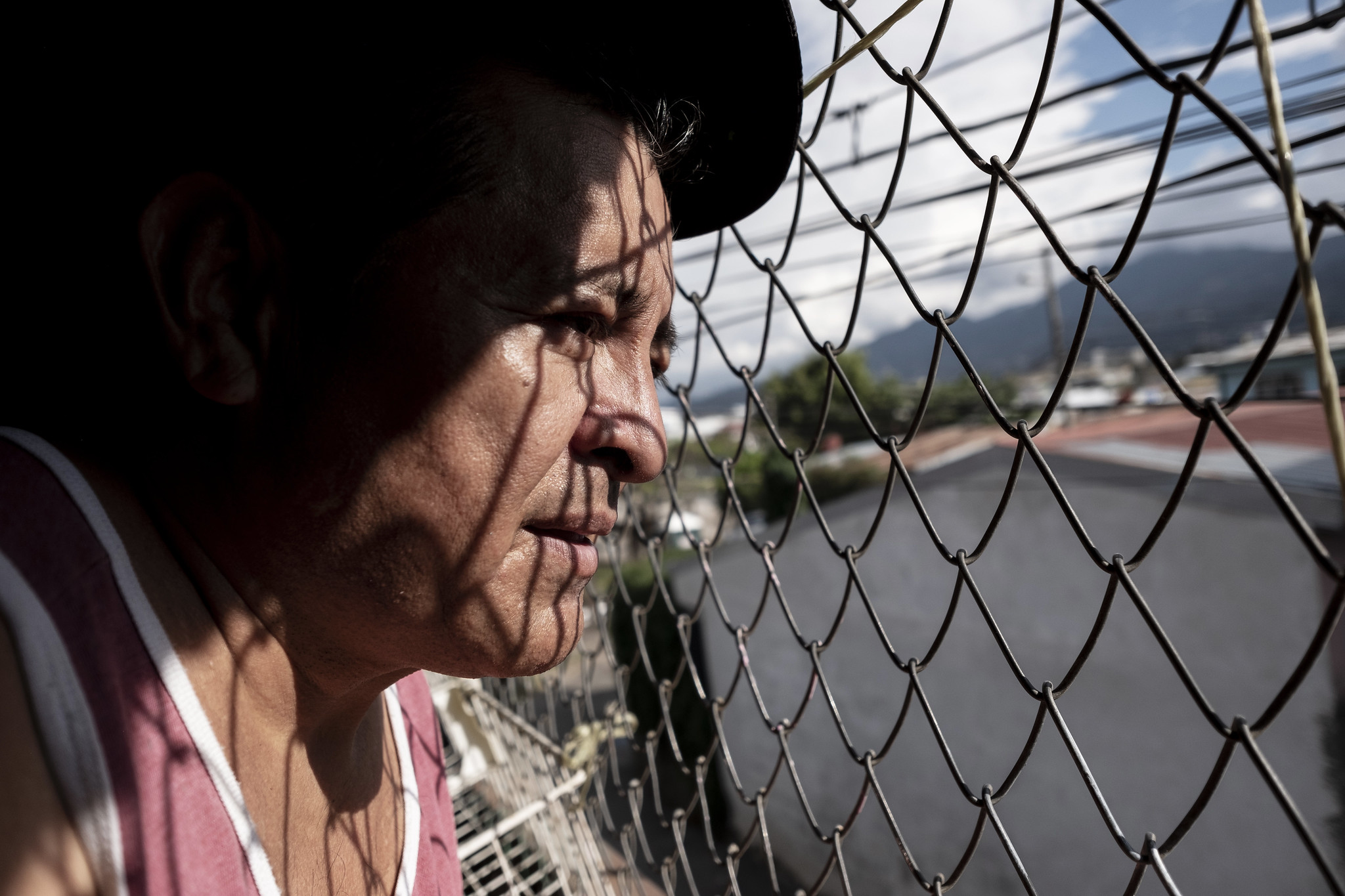It’s not enough to honor millions of refugees with a team of their own, says Phyllis Bennis. They need rights, not medals.

The Olympic rings on display at Tokyo Bay to promote the games. (Dick Thomas Johnson, CC BY 2.0, Wikimedia Commons)
By Phyllis Bennis
Other Words
 The Olympic Refugee Team filing into the stadium during Tokyo’s opening ceremonies provided a powerful, moving sight: almost 30 athletes, carrying the Olympic flag, striding alongside the delegations of almost every country in the world.
The Olympic Refugee Team filing into the stadium during Tokyo’s opening ceremonies provided a powerful, moving sight: almost 30 athletes, carrying the Olympic flag, striding alongside the delegations of almost every country in the world.
Instead of their home countries, these refugees represent the millions around the world who’ve been forcibly displaced from their homes. The team is made up of extraordinary individuals who have overcome huge obstacles just to survive — let alone train as world-class athletes.
The courage of these extraordinary young athletes at the Olympics keeps the plight of refugees — and the responsibility of our own governments for their plight — in front of the eyes of the world.
They are swimmers, cyclists, judoken, wrestlers, runners, and more — from Iraq and Afghanistan, the Democratic Republic of Congo and Cameroon, Sudan and South Sudan, Syria, Venezuela, and beyond.
Several were part of the Olympics’ first Refugee Team five years ago, including Yusra Mardini, a Syrian swimmer and refugee from the country’s civil war.
Her incredible story went viral. When their overloaded dinghy broke down in the Aegean Sea, Yusra and her sister jumped overboard and swam for three hours, pushing it to safety. They saved the lives of dozens desperately trying to reach safety in Greece.
Redefining Resilience – "The starting line doesn't care who we are"
Hit the link below to book your experience and dive deeper in the story of #Olympian @YusraMardini and her journey to #Tokyo2020 #EOC #StrongerTogether https://t.co/vykm2wWtrr pic.twitter.com/HkSNIHc0m4
— Refugee Olympic Team (@RefugeesOlympic) July 29, 2021
Yusra’s was only one of the stories of extraordinary trauma and triumph from Team Refugees. But unfortunately, the population represented by the team just keeps growing.
The Refugee Nation
At the time of the Rio Olympics five years ago, 65 million people were forcibly displaced. This year, that figure has soared to over 82 million. If it were its own country, Refugee Nation would be the 20th most populous country on earth, right between Thailand and Germany.
There are many reasons people are forced to flee their homes — including war and violence, extreme weather and climate change, and economic injustice. The harsh reality is that mass displacement has become normalized, acceptable in today’s world.
Please Support Our Summer Fund Drive!
Global warming and climate chaos are so severe that climate refugees are emerging everywhere. Wars, including many involving the United States, continue to push millions of people out of their homes. And abject poverty, skyrocketing inequality, and a global pandemic are all forcing more desperately poor people to flee in search of work, food, and safety.

Feb. 26, 2020: Nicaraguan Olman Sandino, 50, looks through the wire mesh in the makeshift house where he lives as a refugee in San José, Costa Rica. (J. Arguedas, EU Civil Protection and Humanitarian Aid, Flickr, CC BY-NC-ND 2.0)
It’s not enough to honor millions of refugees with an Olympic team of their own — they need rights, not medals. As long as millions remain displaced, it remains important to build broad and global movements to defend their rights.
The rights guaranteed by the Universal Declaration of Human Rights include “freedom of movement and residence within the borders of each State,” the right “to seek and to enjoy in other countries asylum from persecution,” and the right to return to their homes when hostilities are over.
Unfortunately, from the dangerous waters of the Mediterranean to the arid U.S.-Mexico border, those rights are often denied. It’s a grim thing indeed that there are more people displaced now than at any time since World War II — so many that Refugee Nation appears to be a permanent feature of the Olympics.
Still, the courage of these extraordinary young athletes at the Olympics keeps the plight of refugees — and the responsibility of our own governments for their plight — in front of the eyes of the world.
Team Refugees’ entrance to Tokyo’s Olympic stadium provided a moment of hope and a moment of internationalism. It was beautiful.
But how much more beautiful, how much better than medals, if those athletes — and the 82 million displaced people they represent — could go home after the games? To a home for themselves and their families, in their own country or abroad, safe from the wars and disasters and poverty that drove them out in the first place?
Phyllis Bennis is a fellow of the Institute for Policy Studies. Her most recent book is the 7th updated edition of “Understanding the Palestinian-Israeli Conflict: A Primer” (2018). Her other books include: “Ending the Iraq War: A Primer” (2008), “Understanding the US-Iran Crisis: A Primer” (2008) and “Challenging Empire: How People, Governments, and the UN Defy US Power” (2005).
This article is from Other Words.
The views expressed are solely those of the author and may or may not reflect those of Consortium News.
Please Support Our
Summer Fund Drive!


If emitting greenhouse gases were an Olympic sport, the US would be very competitive for the gold.
I am disturbed about the photo of Nicaraguan Olman Sandino, now apparently living in Costa Rica. My husband and I lived in Nicaragua for a total of eight years, having returned to the States in 2015 in order to be closer to our young grandchildren. We know the situation well.
The photo might lead one to believe that there is persecution in Nicaragua, causing the Nicaraguans to flee to Costa Rica. That simply is not true. Many Nicaraguans do go to Costa Rica looking for work. They return to Nicaragua for holidays, etc.
It is true that Nicaraguans involved in the NED-led violence perpetrated against Nicaragua in 2018 fled to Costa Rica. However, the Nicaraguan government offered them full amnesty in June 2019. The only commitment these people have to make is to not promote violence again.
In the meantime, the Nicaraguan government has made amazing progress, nearly all of it related to improving the lives of the poor (who were involved in the process of forming a new constitution in 1987). We first arrived in Nicaragua in 1986, during the war, and even then we saw how they were building more clinics, and training more doctors, with help from Cuba and other countries.
According the The Alliance for Global Justice, Nicaragua’s strategic response to the pandemic has resulted in the lowest number of infections and deaths per capita, and the highest recovery rate, in the Central American region.
Nicaragua is largely food sufficient, and people are encouraged to stay in their towns and villages and plant food, rather than crowding into Managua. Nearly everyone in the country has access to water and electricity. Decent housing is a right in the Nicaraguan Constitution. The government has many programs which favor women’s rights and women’s leadership. The Sandinista government honors the youth by doing everything that they can to favor them, including offering free university education. The homicide rate is very low. The Nicaraguan police force is highly respected all over Latin America, and they successfully keep drugs out of the country. A highway was recently completed connected the East and West coasts of the country. The Nicaraguan highways are among the best in Latin America.
The government is well prepared for the many natural disasters in Nicaragua–for instance evacuating tens of thousands of people twice before the double hurricanes last year. We were living near Lake Managua in 2014 when an earthquake struck and damaged many buildings. We watched the rapid response of the government–bringing supplies for re-building, along with food (accompanied by the youth) the very next day. No one was killed in the earthquake because they were well trained in how to react.
Nicaraguans are generally not among those refugees fleeing north, though a recent drought could cause havoc there. This is the Nicaragua that we know.
Despite Nicaragua’s achievements, like Cuba and Venezuela, there are ongoing efforts to reverse these humanitarian achievements through the U.S. Congress’ RENACER Act imposing a new set of sanctions on Nicaragua–another form of war that we also experienced with the cruel embargo imposed by President Reagan in 1985.
I spent two weeks of vacation in Nicaragua a few years back. I found what you wrote is true. I found most people are poor, but seem content and happy. Many are self-employed in cottage industries and seem to earn enough to enjoy life. It’s a peaceful place, and the government has done much to improve people’s lives. I have met some who went to Costa Rica to find jobs, because the pay is better in Costa Rica which is a much richer country, but they come back home to Nicaragua eventually. The only refugees at our border seem to be coming from Honduras, Guatemala, El Salvador, countries the US has destroyed in its regime change coups.
Still available as a free download and highly relevant is a book by Dianna Melrose, published by Oxfam in 1989 under the title Nicaragua: The Threat of a Good Example. Despite the country’s small size, the USA is determined to destroy any nation which defies US demands that it fit into the “rule-based order” of international capitalism under US control. The very success and relative contentment of societies such as Nicaragua, Kerala and Cuba render theme dangerous. What if US citizens demanded better lives?
Whitewashing on a grand scale. It is perverse. I appreciate you highlighting these courageous individuals, though.
Always appreciate your thoughts